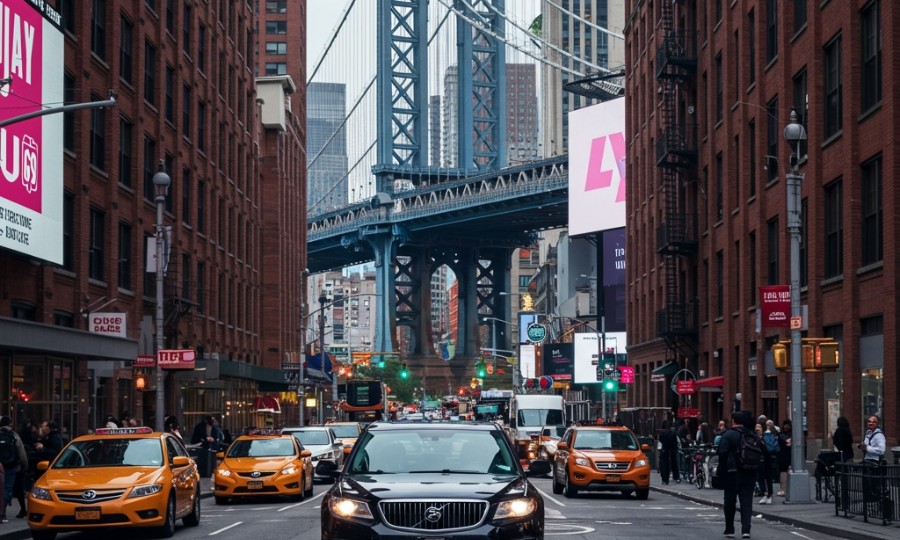
Picture this: You’ve just hailed an Uber or Lyft in the heart of Manhattan, ready to zip across town. It’s convenient, it’s usually reliable, and for many New Yorkers, it’s become an indispensable part of daily life. But have you ever stopped to truly consider what happens when that routine ride takes an unexpected, dangerous turn? What if you’re involved in a collision? Who’s responsible, and what are your rights in the bustling, complex world of Big Apple ridesharing?
Here’s the thing: while rideshare services offer incredible flexibility, they also introduce a unique layer of complexity when accidents occur. It’s not just a standard car accident; we’re talking about a multi-layered legal and insurance puzzle, especially here in New York City, which has its own specific regulations for for-hire vehicles. Understanding this landscape isn’t just smart; it’s absolutely crucial for protecting yourself and your loved ones.
Navigating the NYC Rideshare Landscape: A Quick Overview
New York City, with its iconic yellow cabs, has also become a global hub for ridesharing. Uber and Lyft vehicles are everywhere, weaving through traffic, picking up millions of passengers annually. Unlike many other places, however, NYC has the Taxi & Limousine Commission (TLC), which plays a significant role in regulating these services. This means rideshare drivers and companies operate under a stricter framework than in some other states, affecting everything from driver licensing to insurance requirements. You might think a car is a car, but when it’s a for-hire vehicle in New York, the rules change pretty dramatically.
This unique regulatory environment, combined with the sheer volume of vehicles and pedestrians on our streets, unfortunately, creates a fertile ground for accidents. From fender-benders on the FDR to more serious collisions in Midtown, these incidents are a reality. And when they happen, the question of liability isn’t always straightforward. Isn’t it amazing how many close calls we witness daily in this city?
Understanding Liability: Who’s Responsible When a Rideshare Accident Happens?
This is where things get really intricate. If you’re in a regular car accident, you deal with your insurance and the other driver’s. With Uber or Lyft, it’s different because the driver isn’t just a private citizen; they’re operating under a commercial platform. Both Uber and Lyft carry substantial insurance policies, but their applicability depends heavily on the driver’s “status” at the time of the accident. These policies are tiered, meaning the coverage changes based on whether the driver is logged off, logged on waiting for a request, en route to pick up a passenger, or actively transporting a passenger.
The Crucial Role of New York’s No-Fault Laws
First, let’s talk about New York’s no-fault insurance system. In New York, if you’re injured in a car accident, your own Personal Injury Protection (PIP) coverage (or the PIP coverage of the vehicle you’re in) usually pays for your medical bills and lost wages, regardless of who caused the accident. This is generally true for rideshare accidents too. However, there are limits to PIP coverage, and if your injuries are serious enough to meet a “serious injury threshold” as defined by New York law (e.g., a broken bone, significant disfigurement, or permanent limitation of a body function), you may be able to step outside the no-fault system and pursue a claim against the at-fault party for pain and suffering.
Here’s how Uber and Lyft’s liability insurance generally works (and keep in mind, these are general guidelines; specific policies can vary and are subject to state laws like those in New York):
- Driver Logged Off: If the driver isn’t logged into the app, their personal auto insurance is primary. Uber/Lyft generally have no involvement.
- Driver Logged On, Waiting for a Request: During this period, Uber and Lyft typically provide limited third-party liability coverage (e.g., $50,000 per person/$100,000 per accident for bodily injury, $25,000 for property damage). This acts as secondary coverage if the driver’s personal policy denies the claim or is insufficient.
- Driver En Route to Pick Up a Passenger or Actively Transporting a Passenger: This is the highest coverage tier. Both companies typically provide $1,000,000 in third-party liability coverage. This policy is usually primary during this period, covering injuries to passengers, other drivers, and pedestrians if the rideshare driver is at fault. It’s a significant amount, and it’s there for a reason – to protect you, the passenger, and others on the road.
Let’s consider a couple of examples. Imagine you’re a passenger in an Uber heading down 5th Avenue. The Uber driver, distracted by their phone (a common issue, sadly), runs a red light and collides with another vehicle. In this scenario, since you’re an active passenger, Uber’s $1,000,000 liability policy would likely be triggered to cover your medical expenses, lost wages, and pain and suffering, assuming the Uber driver is found at fault. Your own PIP would pay first, but the significant injuries could allow you to seek further compensation from Uber’s policy.
Now, what if an Uber driver is logged into the app, waiting for a ride request on a side street in Brooklyn, and accidentally backs into a parked car? In this case, their personal insurance would be primary, but if that falls short or denies coverage, Uber’s lower-tier coverage (e.g., $50k/$100k/$25k) would kick in as secondary. You see how important the driver’s status is, don’t you?
Common Causes of Rideshare Accidents in NYC
New York City’s roads are notoriously challenging. The causes of rideshare accidents here often mirror general traffic accident trends but are exacerbated by the unique urban environment:
- Distracted Driving: Both rideshare drivers and other motorists are often glued to their phones – checking GPS, accepting rides, or simply texting. This is a huge problem.
- Aggressive Driving/Road Rage: The fast pace and high pressure of city driving can lead to risky maneuvers.
- Fatigue: Rideshare drivers often work long hours, leading to exhaustion and impaired judgment.
- Congested Traffic: Constant stop-and-go conditions increase the likelihood of rear-end collisions and sideswipes.
- Pedestrians and Cyclists: NYC’s vibrant street life means a constant interaction (and potential conflict) with walkers and bikers, sometimes leading to sudden stops or swerves.
- Poor Road Conditions: Potholes, construction, and uneven pavement can surprise drivers and contribute to accidents.
Your Safety Checklist: What to Do After an NYC Rideshare Accident
If you find yourself involved in a rideshare accident in the Big Apple, taking the right steps immediately can make a significant difference in your physical recovery and any potential legal claims. It’s always better to be over-prepared, don’t you think?
- Prioritize Your Safety and Seek Medical Attention: Even if you feel fine initially, adrenaline can mask injuries. Get checked out by a medical professional as soon as possible. Some injuries, like whiplash or concussions, might not manifest for hours or even days.
- Call 911 and File a Police Report: A police report creates an official record of the incident, which is vital for insurance claims and legal proceedings. Ensure all involved parties, including the rideshare driver and any other vehicles, are documented.
- Gather Information:
- Exchange contact and insurance information with all drivers involved.
- Get the rideshare driver’s name, license plate number, and the vehicle’s make/model.
- Note the Uber/Lyft trip ID.
- Collect contact information from any witnesses.
- Document the Scene: Use your phone to take photos and videos of everything – vehicle damage, traffic signals, road conditions, skid marks, and your injuries. The more visual evidence, the better.
- Report the Accident to Uber/Lyft: Use the app to report the incident. This creates an official record with the company.
- Do NOT Make Statements or Admit Fault: Be polite but firm. Don’t speculate about who was at fault or minimize your injuries to anyone other than medical professionals.
Protecting Your Rights: Why Expert Guidance Matters
Navigating the aftermath of a rideshare accident is complicated. You’re not just dealing with personal injury; you’re often up against large corporations with extensive legal teams and complex insurance policies. You might be thinking this won’t work, that you’re just one person against a giant company, but isn’t that precisely why expert guidance is so important?
An attorney specializing in New York rideshare accident cases understands the nuances of state insurance laws, the specific liability policies of Uber and Lyft, and how to effectively negotiate with these powerful entities. They can help you:
- Understand your rights under New York’s no-fault system.
- Determine which insurance policy (personal, Uber/Lyft’s primary, or Uber/Lyft’s secondary) is applicable.
- Gather necessary evidence, including police reports, medical records, and witness statements.
- Negotiate with insurance companies to ensure you receive fair compensation for medical bills, lost wages, pain, and suffering.
- Represent you in court if a fair settlement cannot be reached.
We know this feels overwhelming, especially when you’re already recovering from an injury. That’s why having a knowledgeable advocate on your side can provide immense relief and significantly improve your chances of a successful outcome. Don’t let the complexity deter you from seeking the justice you deserve.
If you or a loved one has been involved in an Uber or Lyft accident in New York City, don’t hesitate. Reach out to a qualified personal injury attorney today. A consultation can help you understand your options and start on the path to recovery. Your peace of mind and financial well-being are too important to leave to chance.
Free Case Consultation
Injured in an accident? Contact Rosenberg, Minc, Falkoff & Wolff for a free and confidential case review with an experienced NYC personal injury attorney.


